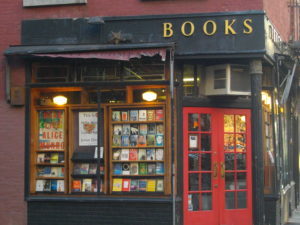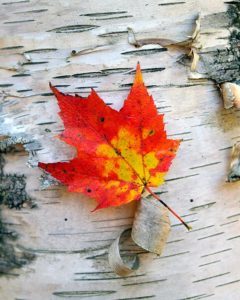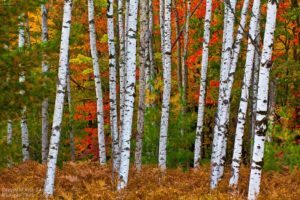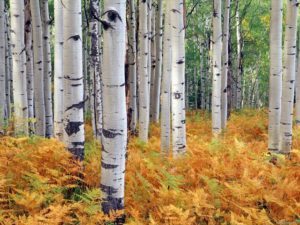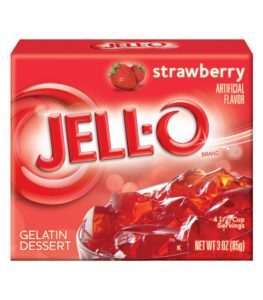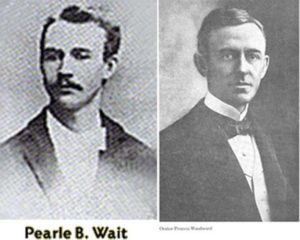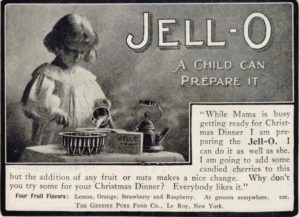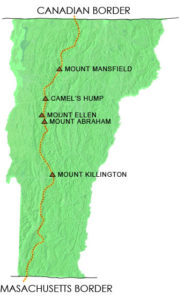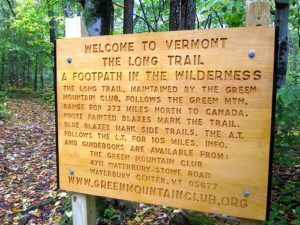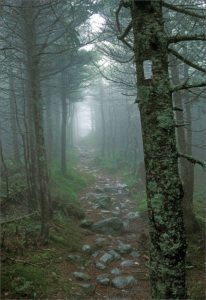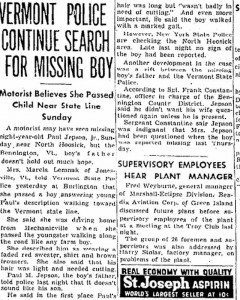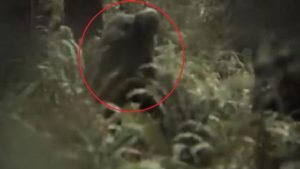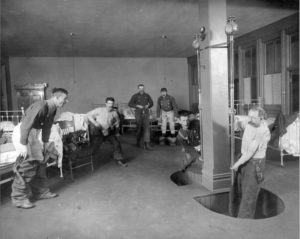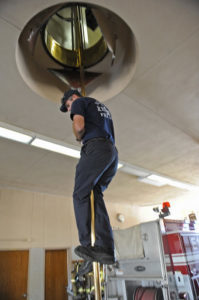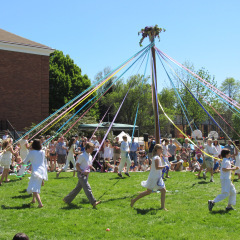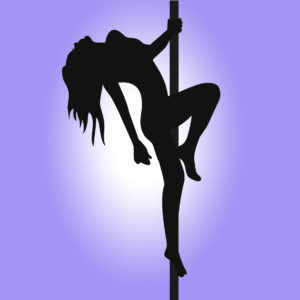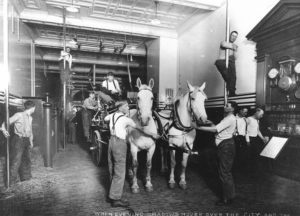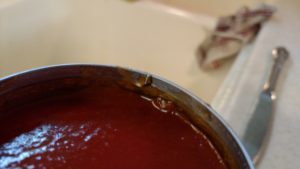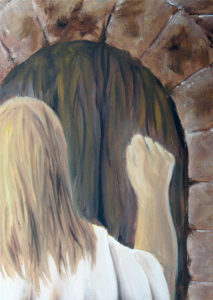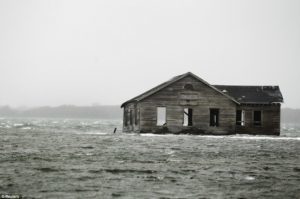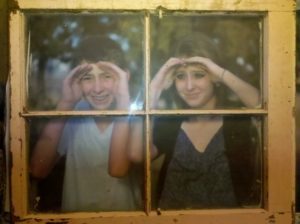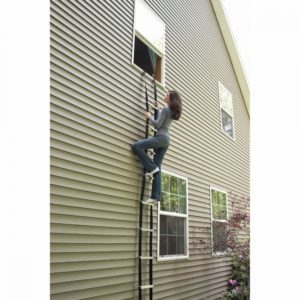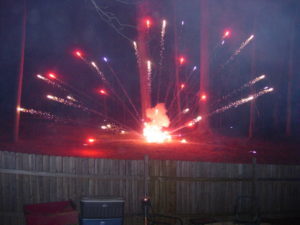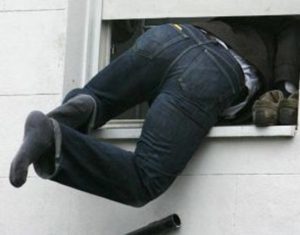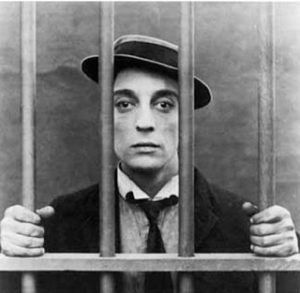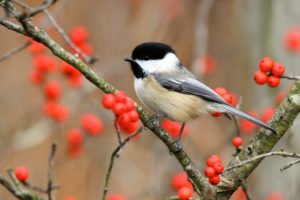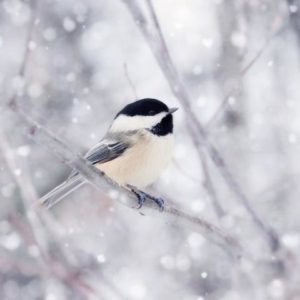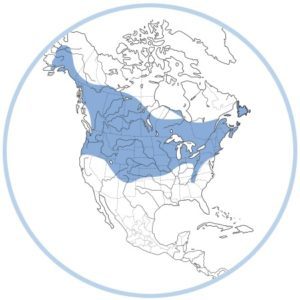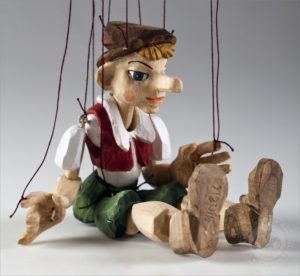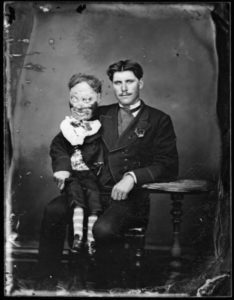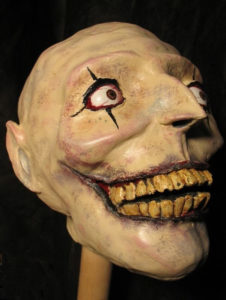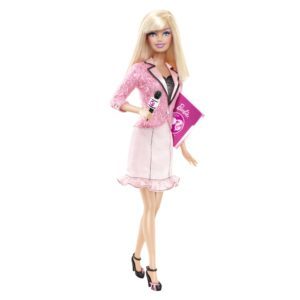R.A. Andrade's Blog, page 2
September 19, 2018
Predicted Future for Books and Bookstores
What is the future for books and bookstores? I have a prediction. As a foundation, please believe that as a writer and reader, I adore books. I like being in bookstores, small or large. I love possessing and reading real, touchable printed books but confess to reading an ebook or two in moments of impatience or cost consciousness. I enjoy both nonfiction and fiction.
Countless experts have ventured opinions on this subject, although forecasting future public taste for reading format or purchasing habits is an expertise of a different nature. Soon after the first ebooks reached significant numbers in sales and major bookstores chains collapsed, eminent death for physical books and bookstores was foretold. And then a few years ago, the expected trend suddenly changed. Let’s start there.
Quotes From A Few Years Ago
“…the Times indicates that the first few months of 2015 actually saw a decline in the number of ebooks sold” (number of print books sold also declined)
“The growth rate of ebooks has recently slowed in many markets, including America and Britain. Publishers now expect most of their sales to remain in print books for decades to come—some say forever.”
“The end of the printed book – but then something really interesting happens. The number of independent bookstores in the U.S. starts to take off…That’s right. The phoenix rises from the ashes…big-box stores and the chains – they really got crushed…so that left a gap for the indies to fill.”
Books & Bookstores Past
3500 BC Clay Tablets—Earliest known written system, the cuneiform alphabet inscribed into clay tablets by the Sumerians.
2400 BC Papyrus Scrolls—Egyptians wrote words on a thick paper-like sheets made from the papyrus plant. Bird feathers and parts of the reeds were used to “write.” There is some evidence this technology began in 3100 BC but took a while to catch on. (Readers likely were attached to the feel, weight, and smell of the clay tablet)
500 – 200 BC Parchment—Invented in an ancient Greece because of shortages and expense of papyrus. Named after a Greek city, parchment is made form untanned animal skins. Parchment caught on gradually probably because of lower cost. (Readers likely were attached to the feel, weight, and smell of papyrus.)
105 AD Paper—Invention for writing credited to Chinese named Cai Lun by combination of mulberries, bark, hemp, old rags, and used fish nets for paper pulp. Some evidence of writing on paper reported around 8 BC while Chinese used a form of paper for wrapping. The price of paper eventually sounded the death for parchment when many facilities began producing paper in Italy around the 13th century making its cost one sixth that of parchment. (Readers likely were attached to the feel, weight, and smell of parchment.)
1985 CD Books—First book available on Compact Disc was The New Grolier Electronic Encyclopedia.
2000 AD Ebook—First mass produced electronic novella by Stephen King, Riding the Bullet sold over 400,000 copies in first 24 hours. It was priced at $2.50 for a download.
2007 AD Kindle—First ebook reader.
If interested on a more detailed history, a good resource is: The Evolution of the Book
Books & Bookstores Present
Year to date (July 29, 2018) print book sales up 2% vs 2017, although fiction print down by 4% from 2017. Data from NPD Bookscan
Globally, for the Big Five publishers, print is 80% and ebook 20%. Fiction is 50% ebook.
CEO’s of the Big Five commented on how pleased they are with the stable business model.
Five years ago, ebooks were 28 % market share for traditionally published books. Now ebooks are at 20%. (This is data for traditional publishers. Most ebooks are sold through Amazon and that data they cannot see. Amazon data is invisible to the rest of the world.)
News stories say ebooks are failing while estimated data by Bookstat indicates 240 million self-published ebooks were sold that are untracked by traditional data.
46% of Canadian book readers use “word of mouth” for deciding on their next book. 36% browse physical bookstores. 11% have never been in a physical bookstore.
23% of Canadian digital book readers now read them on their phone. A 10% growth in 2 years.
For Canadians for the past year, 81% have read a book which is down from 88% in 2014. 92% of the readers have read a print book, up 2 %, and 52% said they had read an ebook, up 4% from the prior year.
The number of bookstores have risen by 40% from 2009 to now.
2018 survey of 2000 American adults, less than 10% reported ending reading printed books, but 30% are reading both print and ebook. 40% read in printed form only.
For Americans for the past year, 74% have read a book, unchanged from 2012. For printed books, 65% read them, and 28% for ebooks.
Books & Bookstores Future
This is the section where I predict the future for books and bookstores. My credentials for doing so: Fiction writing, nonfiction writing, business training and experience, technical education and experience, big corporate experience and understanding, publishing industry food chain awareness, affinity for reading and bookstores and most importantly, this is my post.
Considering history, human nature, business behaviors, and the accelerating speed at which society changes because of technology, our direction is clear. But it is only direction. Unseen options, technologies, and innovative minds will create possibilities none can imagine from this perspective in time.
Books
The overarching premise it that books will always be in our future regardless of form. They have become part of our being human with the quest to learn and to feel emotion. Poetry, fictional stories, and written learning tools are core to our existence. But the form of those “books” will evolve or else we cease to evolve intellectually and spiritually.
History’s lessons give us clarity. The medium for the written word has changed for thousands of years with roots in the first cave paintings of our ancestors. Each epoch of change brings resistance, and then acceptance because of economics, gains for accessibility and other human advantages. Absorb the history listed above, however brief I have represented it. Ebooks in some form will replace the printed book. Like the first use of paper books, mimicking that which was familiar with the use of script writing, today’s ebooks have not yet tapped their potential for a more flexible format to deliver an even more powerful experience to the reader, whether it be poetry, fiction, or nonfiction. It will not be hundreds of years away, but decades or years. Consider the accelerating speed of human innovation. Niches for printed books will remain for those interested for a time, as they have for vinyl records and film photography. Keep in mind, ultimately, those niches disappear. We don’t have clay tablet clubs that cherish that format for its romance.
The future for the current big house publishers is of their own making. But if they remain complacent in their present business models, they will go the way of Pan Am, Kodak and so many others. Perusing their views, some of which I captured above, their long-term survival is not rosy. Amazon seems to be on top of the game, quietly advantaging themselves of the coming changes, but unless they get it right, even that behemoth, which I respect because of their creativity, could lose their edge.
Bookstores
The bookstore landscape has changed from the giant chains to small independents, but with the existing and future inevitable growth in ebooks, they are missing opportunities. I believe the nature of the bookstore needs to be as innovative as the changes in book formats otherwise their numbers will shrink. Speculating here, but possible evolution to become more of a reading experience where people can gather to share ideas, impressions, and emotions connected reading with others. Some bookstores already chase that path with some positive results. I hope some creative entrepreneurs invent some groundbreaking approaches to capture the hearts of potential customers as print book purchases dwindle and ebooks rise in whatever form.
Capitalizing on future changes rather become a victim of them, are the earmarks of successful companies, small or large.
Note:
I am a fiction writer, but research topics and provide posts like the one above for enlightenment and entertainment. If you liked it, please take a look at some of my other posts and my home page, R. A. Andrade. This post was prompted by the following passage in my upcoming novel, Three Remain:
Traci followed, evidently desiring human companionship. “You stealing this stuff?”
“I’ll pay them whenever ‘them’ returns,” Glen answered while loading the trunk. When packed, he walked quickly to the bookstore, Traci tagging along as if she just happened to be going in the same direction. Scanning the store as he entered, Glen could not see Sunshine. Anxiousness rising, he called her name.
Traci’s eyes grew in size and she whispered, “Did you lose your friend too? You sure about the zombie thing?”
The post Predicted Future for Books and Bookstores appeared first on R. A. Andrade.
September 7, 2018
Glory of the White Birch Tree
Walks in the woods on a warm, sunny, fall days are some of my favorite experiences. If the trail winds through trees that include white birch, it transforms into the mystical realm. No words, photographs, video or other forms of art can capture the human perception using all your senses. The aroma of dry leaves, mixed with the caress of a soft fall breeze on your skin, the faint sounds reaching your ears of falling leaves landing on the forest floor. All those wonders are background to the visual deluge of a pallet of radiant oranges, yellows, reds, greens accentuated by the glowing white bark of the white birch tree. Those days remain burned in your brain for a lifetime. It approaches falling in love without the stormy ecstasy of it, but like love, impossible to describe. The closest I can get with words is “serene rapture.”
Photo “Fall Icons” by Guy D. Biechele
Clicking or Touching the Image Links to Guy’s Website
History of The White Birch Tree
During the last Ice Age, a vast White Spruce forest covered the Great Plains and eastern United States just south of the tundra bordering the great ice sheets. The White Birch, along with the spruce were some of the earliest species to follow the retreating ice sheets northward, reaching the Canadian border soon after the ice retreated.
Characteristics
The White Birch is a small to medium sized deciduous tree, which usually grows to approximately 70 feet in height, although some at 130 feet are known. The average life expectancy is about 60 to 70 years, which is short for trees. It is recognized by its bark, which is bright white, and smooth with small black marks and scars. It often separates into papery strips and is easily peeled off in sheets. It is native to North America, from Alaska, throughout Canada, and as far south as North Carolina.
Other Common Names are Canoe Birch, Paper Birch, and Silver Birch
Interesting Facts About The White Birch Tree
New Hampshire state tree
Saskatchewan provincial tree
Sap can be boiled down to produce birch syrup, and also can be used for wine, beer, and medicinal tonics
Wood makes excellent high-yielding fire wood, lumber for furniture, flooring, and popsicle sticks
Native Americans used White Birch bark to cover canoes, make baskets, baby carriers, mats, torches and moose calls. The wood was strong and flexible, so they used it to fashion spears, bows and arrows, snowshoes, and sleds.
Although moose and white-tailed deer will eat the leaves and tender shoots of the White Birch, it is not their favorite food. Porcupines like to eat the bark and rabbits eat the seedlings and young saplings. Beavers also eat it although generally prefer aspen, while willow and White Birch are second choices. Yellow-bellied sapsuckers will peck little holes in the bark and feed on the sap. Hummingbirds and squirrels also drink the sap from the sap wells made by the sapsuckers.
A Native American Legend
Long ago and not far away, a boy was born into a respected family. Before he could walk, a naming ceremony was held in his honor. He was given the name Wiigwaas. Wiigwaas was given many gifts from the Creator. One of those gifts was to help others in a good way. Wiigwaas not only helped his father hunt and fish, but he also helped his mother pick wild berries and tend the garden. He helped the elderly in his village and in other villages nearby. He helped the people make canoes and build their homes.
One day, when he became a young man, Wiigwaas had to go to battle. In this battle, he lost his life. His brothers brought him home. He was wrapped in pure white buckskin and buried on a hill just beyond his village. After the burial, they held a farewell ceremony. The following spring, his people noticed that a little tree had begun to grow at the site of his grave. As this tree grew taller, a dream came to the father of Wiigwaas. In this dream, Wiigwaas told his father that he was still able to help his people. The dream showed the father how to use the birch tree.
“In the springtime, you can take the sweet sap from the tree and distribute it among your people to use as they do the sap from maple trees. The people can peel the bark from the tree and use it. The women may use it to create bowls and baskets for keeping food. The men can use the bark for building lodges and canoes. From the strong wood inside the tree, you can make sleighs and lodge poles. All people can use its wood to make fires.” Today, Wiigwaasʼ words are remembered and he is still helping his people this way, even in death.
Note:
I am a fiction writer, but research topics and provide posts like the one above for enlightenment and entertainment. If you liked it, please take a look at some of my other posts and my home page, R. A. Andrade. This topic was prompted by the following passage in my novel, The Field Trip:
They entered a white birch stand an hour before sunset. He marveled at how a faint orange hue painted the white bark with the changing light. Ross, his concentration on the beautiful colors, bumped into Jay’s back, causing her to stumble forward.
“You are not a careful person,” Jay declared.
The post Glory of the White Birch Tree appeared first on R. A. Andrade.
August 26, 2018
How To Use Jell-O
Although this post is entitled, How To Use Jell-O, it could also have been named How Not To Use Jell-O. Choose the version you wish after reading, but I recommend the latter. But if you want to find the post again, you will need to use the former since that was used as the title for the post.
First, let’s review Jell-O’s roots. Yes, Jell-O has roots, although planting Jell-O will not result in a Jell-O bush. Skip this part if you have no interest in history.
Jell-O is Born
Carpenter and cough syrup manufacturer Pearle B. Wait invented Jell-O in 1897. Peter Cooper held the first patent on gelatin, but gelatin is flavorless and is not Jell-O. Wait bought Cooper’s patent and his wife May added orange, strawberry, raspberry, and lemon flavoring. Jell-O was born. May also came up with the name, Jell-O. Unfortunately for the Wait family, they sold the brand and recipe to a neighbor, Frank Woodward, for $450.
Although Woodward struggle to get sales for the product at first, even trying to sell off the rights, he eventually applied multiple marketing avenues, including giving Jell-O and molds to arriving immigrants on Ellis Island. The Jell-O brand took off in the early 1900’s as a result of the relentless marketing by Woodward. Today, Jell-O remains as one of the top ten most popular desserts in the United States and has 99% brand recognition.
So What Is Jell-O Made From?
I remember stories about Jell-O being made from stuff in horse’s hooves (or maybe that was glue) and I always assumed it contained sugar because it is sweet. I like Jell-O.
Gelatin, the significant ingredient in Jell-O that gives it the cool, jiggly properties we all recognize, is made from collagen protein found in connective tissue of animals. Tissues like tendons, ligaments, cartilage, bone, and skin. Primary source in Jell-O today is likely pig skin. Concerning the sweetness of Jell-O, it’s true, Jell-O contains sugar. If you read the ingredients on the package and run a calculation, you discover that sugars constitute 86% (86.363636…..for those in the sciences) of a serving.
I’d rather forget this part of my research because I like Jell-O.
Jell-O The Dessert
Jell-O is intended to be used as a dessert, although flavors like tomato, celery, and mixed vegetables which have been tried in the past are questionable for that role. Combined with other ingredients, Jell-O also makes other dishes such as salads, cakes, and so on. There are thousands and thousands of recipes that exist for such purposes. That is not the subject of this post. But in searching for possible videos on other uses for Jell-O, I came across this cooking video using Jell-O I consider precious. It is from a collection by Emmymade In Japan which I had not seen before. If you’re into cooking, it’s worth taking a look at her fun YouTube channel. This is her Jell-O recipe:
How To Use Jell-O (or How Not To Use Jell-O)
The following is a collection of nontraditional uses for Jell-O: If anyone is interested in trying some of these (I’m not), I can get the information for you or it should come up in a search of your own:
Weight Loss Aid—Actor John Malkovich claims a 70 pound loss on a Jell-O only diet for four months.
Jell-O Can Part The Sea—In the 1923 classic movie, The Ten Commandments, Moses parts the Red Sea which is made of Jell-O.
Jell-O Shots—Jell-O and alcohol of different varieties. (I confess I did try this one once or twice)
Cat Litter—I am not sure about this one. I think you’re supposed to spread it on cat litter but I’m not sure what it does other than make it pretty. I did accidentally find a recipe for cat litter cake using Jell-O. Really, I did.
Hair and Clothing Dye—Just follow the directions on the package. (Don’t do that. There are formulas online)
Finger Paints—And you can lick your fingers clean.
Removing Bathroom Soap Scum—And you can bathe in it at the same time.
Wrestling—You can wrestle in it. (You’ll need a very large refrigerator I imagine)
Color Horses—Only in the Emerald City like they did in the 1939 Wizard of Oz.
Homemade Play-Doh—All edible.
Flavored Lip Gloss—You can also add sparkles.
A Fuel Cell—Jell-O can be used to produce electricity although you may need a lot to replace a power outage generator.
And my favorite
Test Brain Waves—Using an EEG machine, a bowl of Jell-O produced brainwaves equal to a human subject in a Batavia test in 1993. (Do not tell secrets in front of a bowl of Jell-O)
Note:
This topic prompted by the following passage from the upcoming novel, Three Remain:
Glen turned onto the expressway entrance ramp, his anxiousness signaling his foot to mash the accelerator down. He entered the roadway at 80 mph and immediately backed off the throttle, not wanting to risk a ticket. Once again, he noticed the obvious…no other vehicles on the road. None. Usually, with people going to work, there would be a steady stream of traffic on the expressway. He glanced from the road ahead to the rearview mirror, then to the opposite side of the expressway. Empty. He peeked over at Sunshine, but she seemed lost in thought…he wondered if about her amnesia, the absence of other people, or what flavor Jell-O she likes best.
The post How To Use Jell-O appeared first on R. A. Andrade.
August 14, 2018
Bennington Triangle – The Long Trail Mystery
The Bennington Triangle encompasses a section of Long Trail. Long Trail is a hiking trail located in Vermont and is the oldest long-distance trail in the United States. It is 273 miles long, running from the Massachusetts state line, north through Vermont to the Canadian border. Construction began in 1910 and completed in 1930. The Green Mountain Club was responsible for the construction and has been the primarily caregiver for the trail ever since.
The trail crosses nearly all the Green Mountains summits, including Jay Peak. The trail can best be categorized a back country, climbing rugged peaks, pristine ponds, hardwood forests, swiftly flowing streams, and alpine bogs. Traveling the trail, a hiker will experience a wide diversity, ranging from muddy conditions to rocky and rugged ascents. The variety of terrain is part of Long Trail’s charm and appeal. It is known as Vermont’s “Footpath in the Wilderness.”
Bennington Triangle
There is a 10-mile stretch of Long Trail beginning east of Bennington, Vermont that came into the limelight when five people vanished in that area between 1945 and 1950. The fate of all but one remains a mystery. The following are brief summaries of the incidents:
Experienced 74 year old Middie Rivers guided several hunters the southern Vermont Mountains in 1945. Middie was very familiar with Long Trail, it is said he knew it as well as we know the way around our homes. Heading back to camp for the night, he got ahead of his party. The party arrived safely at camp, but no trace of Rivers was ever found.
An 18 year old Bennington College student developed a passion for botany, intending to explore nearby Long Trail seeking knowledge. Venturing out on her own, she hitched a ride to a spot near the trailhead. She spoke to a few other hikers as they were leaving the trail and then struck out on her solitary trek. Paula was never heard from again. A massive search of the area turned up nothing. “I’m going to hike Long Trail,” were the last words anyone heard from Paula Jean Weldon.
On the same day of the year as Paula Weldon’s disappearance, but three years another incident occurred in the area. James E. Tedford was traveling by bus to Bennington. Other passengers said they saw him asleep during the trip. James was not on the bus when it arrived but all his belongings were.
Eight-year-old Paul Jepson took a trip to a farm in 1950 where his mother worked near Long Trail. Paul left to play by a pig sty while his mother attended other animals on the farm. When she later checked on him, he was gone. Bloodhounds followed his scent to the area Paula Weldon disappeared years earlier, but Paul Jepson was never found.
Two weeks after the Paul Jepson incident, 53 year old Frieda Langer was on a family camping trip. She and her cousin decided on a short hike. She fell into a stream, and not wanting to continue in wet clothes, decided to head back to camp. When her cousin returned to camp later, he discovered Frieda had never returned. Her body was discovered after winter at an area that had been previously searched numerous times. This is the only case in these disappearances where a body was found. Cause of death could not be determined.
If interested in more detailed accounts of the disappearances, an article at All That’s Interesting, is one good resource.
Theories on disappearances near the Bennington area on Long Trail abound in number. It is even told that the number of disappearances numbers closer to ten. The area became known as the Bennington Triangle because of the incidents. Some believe the area is the home of the Bennington Monster, a legendary creature similar in description to Bigfoot.
Note:
This topic prompted by the following passage from the novel, The Field Trip:
The regional branch of the U.S. Forest Service was not difficult to find as it was situated on the opposite side of the road, only a few hundred feet north of the service station. The most notable features evident on the property were signs. One, of enormous proportions at the entrance to the parking lot read “Parking,” of all things. This sturdy, rustic cabin stood as a snapshot of the American journey. Nearby Long Trail was the oldest long-distance trail in the United States, being constructed between the years 1910 and 1930. It ran 272 miles through the state between the Massachusetts and Canadian borders.
The post Bennington Triangle – The Long Trail Mystery appeared first on R. A. Andrade.
August 2, 2018
Another Piece of History – The Firehouse Pole
The image of a fire station for many people includes bright red fire engines, a Dalmatian, firefighters, and the firehouse pole or fireman’s pole or fire pole. It’s an iconic fixture associated with fire stations in so many movies. How often have you had people ask you in a conversation, “When did they start using those brass poles in fire stations, and why?” Frequently, right? Well if you’ve never had the answer, this is the post for you.
First a quiz to evaluate your skills at guessing the correct answer. This is multiple choice and not an essay. Relax.
History of the Firehouse Pole – The Quiz
How and why was the firehouse pole first introduced?
A) Maypole—On May Day in 1902 at a firehouse in London, England, resident firefighters celebrated the occasion with festive dancing around a maypole. At the sounding of a fire alarm for call to action, the firefighters rushed to the stairwell in unison, jamming against each other at the uppermost step. One of the firefighters, slower than his brethren, seeing the blockage of bodies at the stairs ahead, used the may pole to slide down from an open window. Carling beer may have been an influential factor in the historic event.
 B) Pole Vault—A Boston, Massachusetts firefighter who enjoyed pole vaulting for relaxation decided to take his pole home with him after a field practice in July 1893. Since his work shift was scheduled immediately after the practice, he brought his pole into the firehouse, not wanting to risk theft if left in his carriage. A fellow firefighter solved the dilemma for temporary storage when he suggested resting the pole through a new stairwell construction hole in the second story floor. A fire alarm soon sounded. In a rush to descend to the fire wagon, one of the men slid down the pole.
B) Pole Vault—A Boston, Massachusetts firefighter who enjoyed pole vaulting for relaxation decided to take his pole home with him after a field practice in July 1893. Since his work shift was scheduled immediately after the practice, he brought his pole into the firehouse, not wanting to risk theft if left in his carriage. A fellow firefighter solved the dilemma for temporary storage when he suggested resting the pole through a new stairwell construction hole in the second story floor. A fire alarm soon sounded. In a rush to descend to the fire wagon, one of the men slid down the pole.
C) Pole Dancing—Six firefighters held a bachelor party at a local exotic dance pub in Sydney, Australia on a September 1921 evening. Watching one of the dancers perform a routine using a brass pole, one of the men who was attentively contemplating her skills, suddenly yelled, “Hey, we could do that!” Following some very odd expressions from his companions, he convinced them to bring the dancer and her pole to the firehouse. Interested in a continuation of the entertainment, they agreed. Once a hole was cut in the second story floor and the pole affixed to the ground floor, Easy May (the dancer’s name) performed a twirling, sliding descent from second floor. All personnel at the firehouse gawked in appreciation of the demonstration. The pole became a permanent fixture in that firehouse and was nicknamed, “The Easy May.”
D) Flagpole—A Canadian construction firm was contracted to install a flag pole at a Toronto firehouse in November 1889. On the scheduled day for setting up the flag pole, a fierce snow storm arose. Because of a heavy booking for the coming days and weeks, the construction stuck with plan for installation in spite of the bitter conditions. Once the work crew arrived at the firehouse and got out into the blinding, heavy snowfall they quickly realized the folly of attempting an installation of the flag pole on that day. But install, they must. One of the crew screamed out a suggestion above the howling winds. The others quickly nodded agreement. And so, the men carried the pole into the firehouse, chopped a hole in the ceiling, through the floor above, and raised the pole through the breach. The firefighters gathered around the upper portion of the pole protruding into the second story sleeping quarters. After minutes of silence, one of the men spoke. “It looks nice. Should we hoist the Union Jack, the Red Ensign or the governor’s flag?”
E) Hay Binding Pole—Wooden binding poles were used to secure hay on wagons. Horses at early firehouses fed on hay and the poles were frequently stored in firehouse lofts. In 1878 at a firehouse in Chicago, Illinois, a firefighter decided to slide down a hay binding hole to reach the ground level quickly during an alarm sounding. The captain at the firehouse, witnessing how quickly the firefighter reached the fire wagon on the ground floor, had a pole made from pine coated with varnish and wax. The firefighters from that firehouse soon became the butt of jokes by firefighters all over Chicago, but they were always the first fire wagon to arrive at the scene of a fire.
THE ANSWER
Click or Touch the Image Below for the Answer
Note:
This post prompted by a suggestion from my editor, Judy Berlinski, and the following passage from the upcoming novel, Three Remain:
Entering the station with Sunshine on his heels, the same disquiet he felt at Frank’s home surfaced. He called, his voice echoing throughout the empty garage. Two fire engines sat pristine in their allotted spaces, but no people. The glossy, bright-red trucks awaited call to action with a crew that did not exist.
Twisting to take in the deserted surroundings, Sunshine mumbled, “Maybe you should shimmy up the brass pole thing they all have. Where is it? I can’t see one.”
“One story building.”
Sunshine whispered, “It’s creepy in here, let’s go.”
The post Another Piece of History – The Firehouse Pole appeared first on R. A. Andrade.
July 24, 2018
The Truth About Can Openers
I did not anticipate issuing another post on can openers after the previous post entitled, So You Need To Open A Can? However, compelled by a recent experience, I feel the obligation to tell the truth about can openers for the benefit of anyone interested in the subject.
As stated in my previous post, I have limited experience with the can openers on the market today, so I consolidated recommendations of those who have in that post. That changed when our mechanical can opener at home suddenly refused to open a can. Although imperfect, it was acceptable until that day. Frustrated by the requirement to open a can of some critical ingredient for a recipe, I resorted to my pocket knife. It was an ugly, messy, and time-consuming process. On the brighter side, it was my opportunity to purchase the highly rated mechanical opener, EZ-DUZ-IT Deluxe Can Opener. I anticipated finally being able to open cans without the annoying faults endured during my life for such a simple task.
The Truth
EZ-DUZ-IT is not the perfect can opener. I discovered after a few uses, it does grip cans well, it does open the lid smoothly, it seems solidly built, it is easy to hold, but it does not always cut completely around the lid. And if it does, a sharp metal tang remains. Maybe it’s designed to do that. I do not like a sharp metal piece or a lid that remains attached to the can.
These are photos of the evidence:
Maybe this is the best on the market, but I would hope not. If any reader has experience with a better product, please let us know. The remainder of this update post provides insight into the can opening experience through videos.
The Frustration
Desperation
Success
Tips
Note:
This subject prompted by the following passage from the upcoming novel, Three Remain:
…While Glen unpacked his computer, he heard the sounds of drawers sliding and pans clanging. When he looked up while it booted, he saw the young woman he anointed with the name Sunshine studying the mechanical can opener as if pondering a translation of hieroglyphics.
The post The Truth About Can Openers appeared first on R. A. Andrade.
July 17, 2018
A Guide To Find Out If Your Neighbor or Friend Is At Home
Did you ever want to know if a neighbor or friend was home? Of course you have, but it’s not always an easy endeavor. Determined to research the proper etiquette for performing this social task, I found nothing. This post fills that void and provides a public service by giving you a guide to find out if your neighbor or friend is at home for those frustrated by not knowing the proper way to approach such a challenge.
The Obvious
Is their vehicle in the driveway or garage? – Although determining the presence of said vehicle in a windowless garage mitigates the effectiveness. If absent, that may provide an indication as to the state of occupancy, although not perfect.
Knock on the front door or another obvious entrance. – This technique is favored by many.
Ring the doorbell or other signaling device provided on the dwelling. – Another favored tactic. Mechanism is typically located nearby or on the front door.
Call the person by phone. – A tried and true method for those possessing such a device.
Send them an email or message through social media. – A note like, “Hey, I’m standing at your front door and it’s cold (or hot) out here.”
If the Obvious Fails
What if your neighbor or friend is trying to avoid you? What if they are listening to music on headphones and don’t hear any of the obvious methods? What if their spouse, partner, roommate, or otherwise random visitor knocked them unconscious in a dispute over which program to watch on the TV?
These are some less obvious techniques:
Check to determine if the door is unlocked. If so, crack it open and yell loudly, “Is anyone home?”
Peer into the front windows and then tap on them. Move in clockwise direction around the house to each window in sequence, repeating the process. If the home has a second floor, obtain a ladder and try those windows, still adhering to the clockwise convention. Caution: The number one cause of injuries at home is falling from a ladder. It is imperative that you have a valid ID and medical card on your person.
If the back yard is inaccessible, or a ladder impractical, a robot drone can be employed to check if the neighbor or friend is hiding in the yard and to peek through the second story windows. This is a safer technique, but unless skilled can result in accidental window glass damage.
Calling through the door, “Trick or Treat,” “I found your cat,” or “It’s the police,” can also be very effective. “Trick or Treat” is my favorite but most effectual in late October. And I have discovered, “I found your cat,” ineffective if the person does not have a cat.
The shock and awe approach. Setting off a firework display in conjunction with the discharge of a firearm or air-horn is quite powerful, usually getting good results alerting both visual and auditory senses of the subject person. Suggestion: Since neighborhood watch organizations can be a problem with this technique, especially if a firearm is chosen, it is prudent to notify such organizations of your plans beforehand to avoid unnecessary incarceration.
Exploration is a surefire method to determine occupancy. This is predicated on the ability to enter the dwelling by an unlocked door or window or render any door or window to be unlocked. Make sure to check basement windows as they are often overlooked for access. Once inside, remove shoes and then silently search through the dwelling. Complete silence is imperative because your neighbor or friend may be asleep. Don’t forget to check cabinets, closets, and under all beds since these are prime hiding locations if you neighbor or friend is trying to avoid you.
And finally, there is the emergency call option. Call 911 to report your neighbor lying unconscious on the floor or some such story. Be creative. They will find out if they are at home for you. Be aware that 911 works for the United States and Canada, but most other countries have different call codes. For example, The United Kingdom uses 112 or 999, Australia 000 (that’s an easy one to remember) and India 100 or 102 or 108 or 101(not so easy.) Interesting Antarctica has a 911 emergency call number but no one there to take it. So be aware of that one if your neighbor or friend lives in Antarctica. Warning: Some countries might charge you with a crime using this method.
This guide provided for single family dwellings. Methodologies will vary in some cases for neighbors or friends living in apartment buildings. That could be a subject for a future post if requested.
Note: This topic prompted by the following passage in the upcoming novel, Three Remain:
“That’s odd,” he commented. “There’s always at least a pickup parked there. Frank’s been recovering from an operation he had last week.” Walking to the front door, he looked through the sidelight, and knocked.
Hanging back, Sunshine shouted, “See if it’s unlocked. If he shoots you for breaking and entering, I’ll take you to the hospital.”
Ignoring his comic advisor, Glen pounded on the door and yelled, “Anyone home?” After listening with his ear pressed to the door, he depressed the latch and pushed. The door swung open.
“Go in and check,” Sunshine shouted. “I got your back.”
The post A Guide To Find Out If Your Neighbor or Friend Is At Home appeared first on R. A. Andrade.
July 10, 2018
raandrade.com Website Menu Addition – Post Categories
This is a R. A. Andrade website informational post regarding post categories.
An additional tab, labeled, Post Categories, has been added to the raandrade.com website menu.
This new section summarizes all posts by topic category. This provides a guide those interested in posts by subject.
Still under construction, as each category is added, every post relating to that subject matter will be included.
Any suggestions or comments relating to this addition or any other topic are always welcome.
R. A. Andrade
The post raandrade.com Website Menu Addition – Post Categories appeared first on R. A. Andrade.
June 30, 2018
Beauty of the Chickadee
This post celebrates the beauty of the Chickadee. It’s a bird. It looks like this.
As a kid, one of the first birds I could recognize was the chickadee. I didn’t know it as a chickadee, but this small, cute, and puffy bird became a familiar sight on walks through the woods in Massachusetts, even in the dead of winter. I remember attempting to light a fire with wet twigs and a book of matches on a snow-covered trail around the age of ten. A chickadee watched my struggle from a branch only a short distance above me. Persistent at obtaining success, I managed to get first smoke, and then adorable, living flames under challenging conditions. The chickadee seemed to vocalize approval.
I reside in Michigan now and winters here can be brutal. I have looked out from the warmth of a kitchen to a bird feeder in the yard while a storm raged at temperatures ten degrees below zero (that’s Fahrenheit degrees in spite of Celsius being a more logical approach temperature measure). Chickadees flitted to the feeders for a morning snack between wind gusts in the driving snow, their black and white color scheme prominent against brilliant white. Brave little creatures.
The Chickadee
Well, apparently it’s not “the chickadee” because the species I referenced above is the Black-Capped Chickadee. There are seven chickadee species in North America, Black-Capped Chickadees, Carolina Chickadees, and Mountain Chickadees being the most common. They are curious birds, having little fear of humans. The name, “chickadee” comes from sound of the call they make. They are generally non-migratory birds, so stay in an area and withstand difficult winters in much of their range. Chickadee populations are stable or increasing in almost all regions. These are the seven varieties:
Black-Capped—Range from upper United States, through much of Canada, and into parts of Alaska. (yes, I know Alaska is part of the United States)
Boreal—Coniferous wooded areas throughout Canada, Alaska, and some upper parts of the United States.
Carolina—Southern United States from Texas to the east coast, and yes, that includes North and South Carolina.
Grey-Headed—Northern Asia, subarctic Scandinavia, Alaska, and northern Canada.
Mexican—Wooded highlands of Mexico, and southern Arizona and New Mexico.
Mountain—Mountainous regions of western United States and Canada.
Chestnut-Backed—Extreme western United States and Canada in mixed coniferous forests.
Interesting Chickadee Facts
Black-Capped Chickadee the state bird of Massachusetts and Maine, and also provincial bird of New Brunswick in Canada.
Chickadees have complex vocalizations allowing them to communicate a variety of information. Since they frequent dense vegetation, birds are usually out of visual range and this likely is an evolutionary adaptation.
On cold winter nights, chickadees can lower their body temperature by about 18 degrees Fahrenheit or 10 degrees Celsius to conserve energy. Not common in birds.
Heavy eaters. Chickadees can gain 10 percent of their body weight each day and loose it all again during cold winter nights.
They need 20 times more food in cold weather than they do in the summer.
Chickadees’ brain adds capacity to remember where they hide food for cold weather. When not needed, the added capacity is reduced.
Black-Capped Chickadees and Carolina Chickadees are similar in appearance, therefore difficult to tell apart. Their ranges overlap, and they sometimes mate with each other.
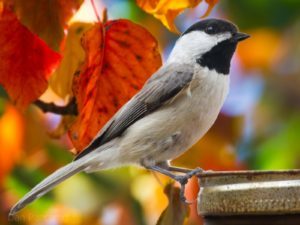 Carolina Chickadee
Carolina Chickadee
Beauty of the Chickadee in Art
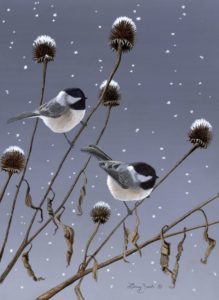 Winter Pair by Larry Zack
Winter Pair by Larry Zack
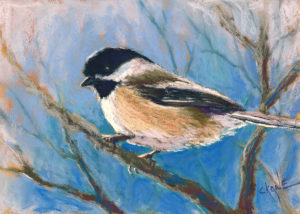 Winter Chickadee by Christine Camp
Winter Chickadee by Christine Camp
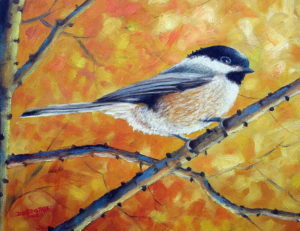 by David G. Paul
by David G. Paul
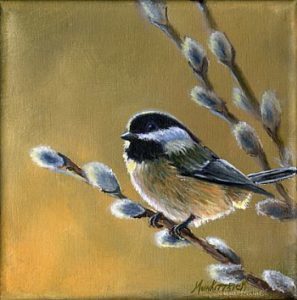 Chickadee and Pussywillow by Dianne Munkittrick
Chickadee and Pussywillow by Dianne Munkittrick
Note:
This post prompted by the following passage from the upcoming novel, Three Remain:
Minutes later, they ambled down the driveway, absorbing the beauty of another cloudless, warm, Michigan summer day. Sunshine stopped for a moment to watch a small, puffy Chickadee sitting on a nearby branch. She stepped toward it, but seemingly unafraid, it stayed perched, chirping. Cocking her head, she extended her hand, lightly touching the bird’s feathers. It remained fixed to the branch. “Well, aren’t you sweet.”
The post Beauty of the Chickadee appeared first on R. A. Andrade.
June 10, 2018
Are You Afraid of Puppets?
Are you afraid of puppets? Many people find puppets creepy and this post intends to delve into why.
Fear of Puppets
If you are one of those truly frightened of puppets, you will be delighted to know there is a name for it: Pupaphobia. (Pupaphobia…really. Why not call it Puppetphobia, although it’s probably less weird than classifying the fear of clowns as “Coulrophobia.” Pupaphobia at least starts with the letters P-U-P.) Symptoms of Pupaphobia are: extreme anxiety, shortness of breath, heart palpitations, excessive sweating, nausea, dry mouth, confusion, lack of focus, irritability, shaking, feeling powerless, headaches, and avoidance. Most people do not fall into the category of this phobia, but rather just find puppets creepy.
Reasons for Fearing Puppets
Interestingly, researching this subject, little information surfaces on possible reasons for fearing puppets. Some information exists on defining Pupaphobia, and some organizations on dealing with phobias, but a minimal amount published on why puppets are considered creepy by many humans. Ranging from extreme phobia to just uneasiness about puppets, these are some of the existing theories:
Childhood Trauma—Terrible nightmares involving puppets, encountering a frightening situation during a puppet performance, or seeing an intentionally scary puppet.
Illusion of Life—No apparent human control of a puppet can scare people. An inanimate thing comes alive.
Uncanny and the Uncanny Valley—Psychologist Sigmund Freud and robotics professor Masahiro Mori hypothesize similar causes. Mori proposed, around 1970, when a robot or puppet becomes more and more human in appearance and mannerisms, it is perceived as barely human, arousing a feeling of uncanniness and revulsion. As the robot or puppet gets nearer perfect replication of being human, that uneasiness wanes, until acceptance is reached. Frankenstein is creepier than Godzilla.
Intentionally Creepy—Some memorable puppets were created to be scary or creepy for entertainment in movies and literature. Mission accomplished: they are terrifying.
Supernatural—For thousands of years puppets have been utilized to mystify populations to believe in the presence of gods. Evidence exists suggesting prehistoric shamans used puppets for propaganda. Puppets were apparitions of the spirit world.
The Truth About Puppets
So why are some people afraid of puppets? Although I enjoy connecting human behavior to factors derived from human evolution, in this case I think we can rule that out. There just weren’t any tribes of prehistoric puppets that our early forebearers would have encountered. Archeologist have yet to uncover any. The truth concerning the creepiness of puppets lies in a combination of the theories listed above. The foundation for the fear is a mix of Professor Masahiro Mori’s “Uncanny Valley,” and “Intentionally Creepy.”
For insight, I need to play the “Barbie” card. Imagine creating a puppet from a Barbie Doll. We’ll use the famous Barbie herself. Whether using the older curvy edition, or the newer trimer version, the results are the same…NOT CREEPY!!! Most puppets fashioned are made to look creepy, either intentionally or unintentionally. Maybe the creator or puppet customer is thinking “let’s make it look funny” but somehow the product ends up with a distorted facial features and/or body, the result looking hideous. Not funny to most people. It’s just plain creepy. Additionally, the multitude of puppets designed in the film industry for the horror genre and the images stuck in one’s brain concerning puppets is not pleasant…and expose a child to such a puppet at an early age and the emotion felt for puppets imprints on their brain for life…puppets are creepy. Be afraid of puppets. That can be fun for some who get kicks being frightened, but alternatively could lead to a phobia for a few.
Puppets Ranking in the Creepy Index
The following is a ranking for “creepiness.” The highest ranked three was obtained through my research. Those ranked below those were obtained intuitively:
Clowns—No dispute with clowns in first place. They’re not funny and most are creepy.
Dolls—I disagree with second place for dolls. Although some are ghoulish, most are not creepy. I’ll bring up the Barbie card again.
Puppets—I would put puppets in second place, but this is the official ranking by “them.”
Robots—Only the deranged ones. Good robots are okay.
Cats—There are so many cute kitties in the world, along with a multitude of cat lovers, but there are cats that hang with witches. Those cats possess supernatural capabilities. They are especially creepy on Halloween.
Children—Perspective by a small portion of the world’s population so it must be mentioned.
Giant Bunnies—There actually is at least one sci-fi movie with giant bunnies as the monsters. I watched it. Didn’t work for me. I laughed.
Notes:
For further reading:
Essay on why people fear puppets by Lucia Pete
Interview with Masahiro Mori on the Uncanny Valley
This post prompted by the following passage from the upcoming novel, Three Remain:
After a few moments, Glen prodded, “We’ll let’s hear it.”
“What do you want to hear?”
“Come on Sunshine! Stop playing games. What is your name? Where do you live? What color is your toothbrush? Do you have a dog? Do you like beets? Are you afraid of puppets?”
The post Are You Afraid of Puppets? appeared first on R. A. Andrade.


